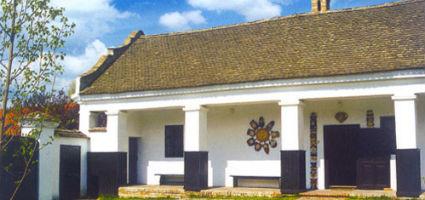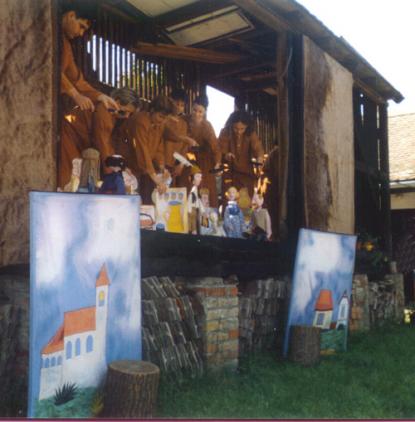2025. December 24. Wednesday
Fairy Tale House - Békéscsaba
 |
Address: 5600, Békéscsaba Békési út 17.
Phone number: (66) 326-370
E-mail: mesehaz@mesehaz.hu
Opening hours: Mon-Fri 9-16
At the weekends and in the evening we are open if a program is on The museum is closed during the holidays. |
Museum tickets, service costs:
|
Ticket for adults
|
200 HUF
|
|
|
Ticket for students
|
100 HUF
|
The Napsugár Drolley Group exists since 1949 in Békéscsaba. The aim of the group is the artistic education of children, the formation of an audience which appreciates and understands theatre. Most of the performances were created for children, but they some of them are for adult.

The members of the group are amateur puppeteers. The National Puppet-Show festival is held in Békéscsaba in every three years. The group toured several countries, they received the Nívó Prize, they were given the Eternal Eminent Group title, and the UNIMA diploma.
The designer of the puppets had been Konrád Lenkefi for decades, who was the manager of the group as well until his death after which his son took over the tasks.
The large amount of puppets was stored in storage houses until the Fairy Tale House opened. Since then, the puppets are displayed at the permanent exhibition of the Fairy Tale House.
Konrád Lenkefi was a multilateral man: he himself made the tools necessary to make the puppets, designed the puppets, the decoration, and the accessories. As he understood the puppets, he treated them as moving artworks. He paid attention to the proper way of moving them. He did not only consider the anatomy of the puppets but also the mobility of the material used.
The demanding plastic formation was part of his art. He was aware of the history of costumes, and folklore. He was brave and nothing could surprise him.
As a real fine artist, he was always able to adapt to the character of the performance.

The members of the group are amateur puppeteers. The National Puppet-Show festival is held in Békéscsaba in every three years. The group toured several countries, they received the Nívó Prize, they were given the Eternal Eminent Group title, and the UNIMA diploma.
The designer of the puppets had been Konrád Lenkefi for decades, who was the manager of the group as well until his death after which his son took over the tasks.
The large amount of puppets was stored in storage houses until the Fairy Tale House opened. Since then, the puppets are displayed at the permanent exhibition of the Fairy Tale House.
Konrád Lenkefi was a multilateral man: he himself made the tools necessary to make the puppets, designed the puppets, the decoration, and the accessories. As he understood the puppets, he treated them as moving artworks. He paid attention to the proper way of moving them. He did not only consider the anatomy of the puppets but also the mobility of the material used.
The demanding plastic formation was part of his art. He was aware of the history of costumes, and folklore. He was brave and nothing could surprise him.
As a real fine artist, he was always able to adapt to the character of the performance.
